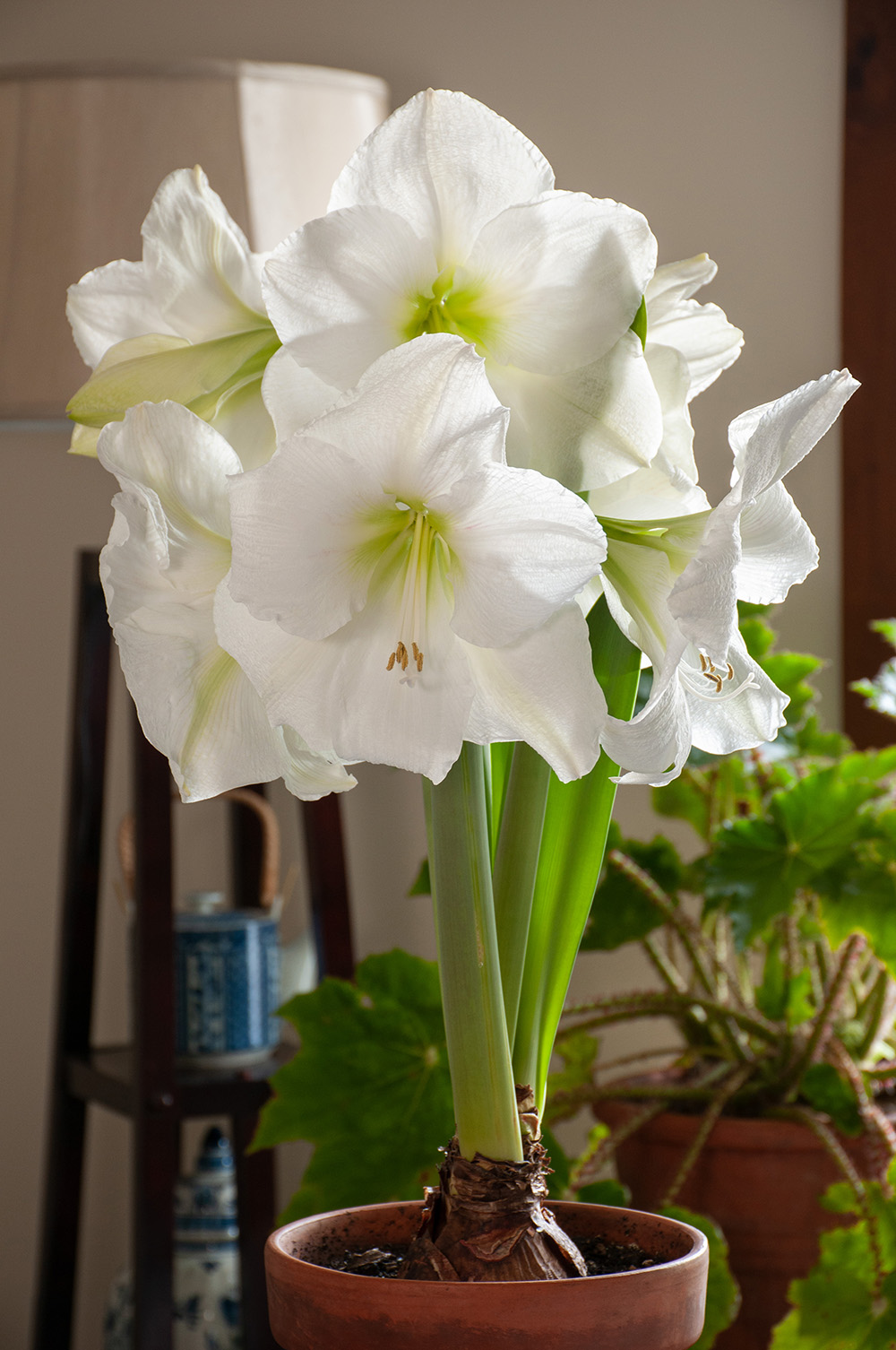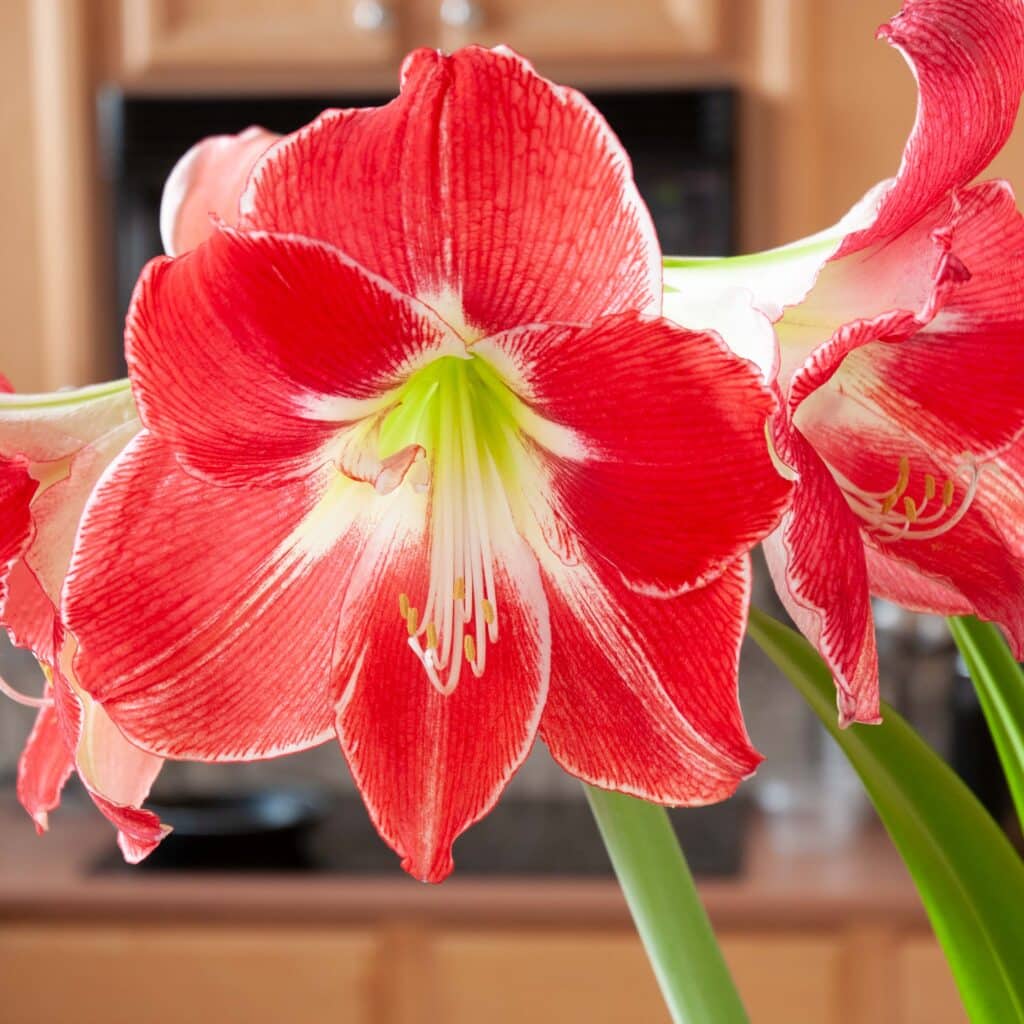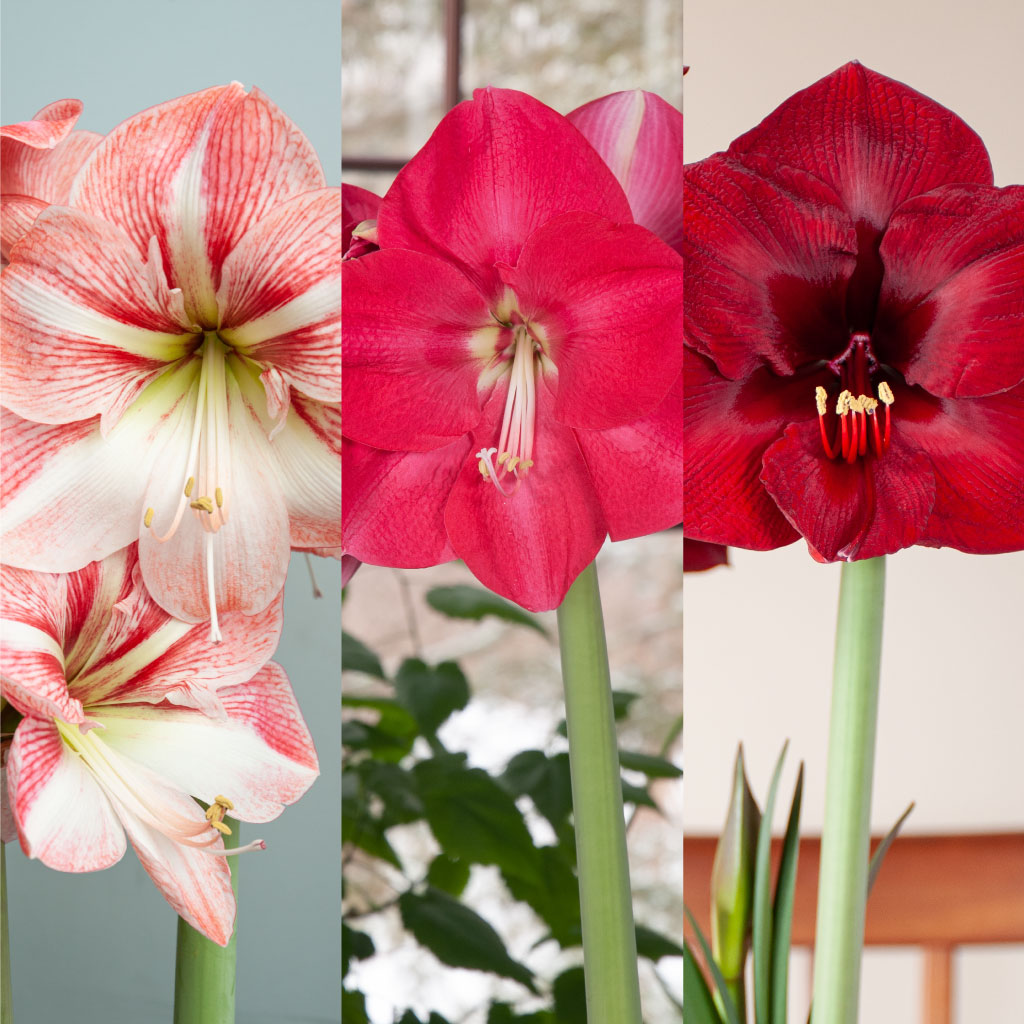
It’s bulb season. This will be a two-part column about how to enjoy growing bulbs inside a glasshouse. Most of this advice will also be useful for growing on a sunny windowsill. Next month I will talk about forcing other tender and hardy bulbs indoors. But this month, I’m talking about Amaryllis with Christian Curless, a horticulturist in product development, sourcing and selecting new varieties for Colorblends Wholesale Flower Bulbs.
“Giving these bulbs as holiday presents is great,” Christian says. “But don’t expect Amaryllis to flower for Christmas. December has plenty of other color.” The real value of Amaryllis comes in January and February. Christian says, “It’s in the dark months when Amaryllises are a lifesaver. Half the fun is watching an apparently lifeless bulb explode and make these incredible flowers.” The bulbs are sold just as they are awakening from dormancy; they take twelve weeks to bloom. He says, “They are sure-fire. The flowers are already in there in an embryonic form. All you need is patience.”
Are there advantages to growing bulbs in a greenhouse? “Yes,” Christian tells me. “Because there’s more light though the glass, you can get better, more intense color, especially in some of the paler varieties, such as Apple Blossom.” Start them in the greenhouse, and then bring into the house as they flower.

Temperature matters. Cooler is better, he advises, to prolong bloom. And if you are timing the flowers to open for an occasion, you can slow down, or speed up growth by placement in the greenhouse. “Keep in mind, it matters greatly the distance from the ground because of heat rising,” he advises. Take them off the bench and place them higher or right down on the floor to get what you need. Christian has complete care information on the Colorblends website.
After flowering, many folks will discard an Amaryllis, but it’s easy to bring them along through summer to rebloom again in winter. After all frost is past, you can harden the bulbs in their pots outdoors in a shaded location, gradually bringing them out to full sun in the north, and half-day in the south. The large strappy leaves are a great design element on a patio or planted in the garden. If the original pot seems tippy because of leaf growth, you can repot to a larger container—up to fourteen inches in diameter—the fleshy roots will have plenty of room to grow.

Amaryllis is naturally a spring-blooming bulb, so the you will be forcing it again by encouraging fall dormancy. Dig up any in the garden before a killing frost. Remove soil and store in a cool dry place. (Because the bulbs are toxic, always store them away from pets and small children.) Bring any potted ones into a cool frost-free place—a garage or basement—and allow foliage to die off. After six to eight weeks of rest, you can repot the bare-root ones and awaken the potted bulbs with water and light, although not a lot of water. Christian advises more patience at this point. As he says on the Colorblends website, “If the bulb is firm, it will eventually grow.”










